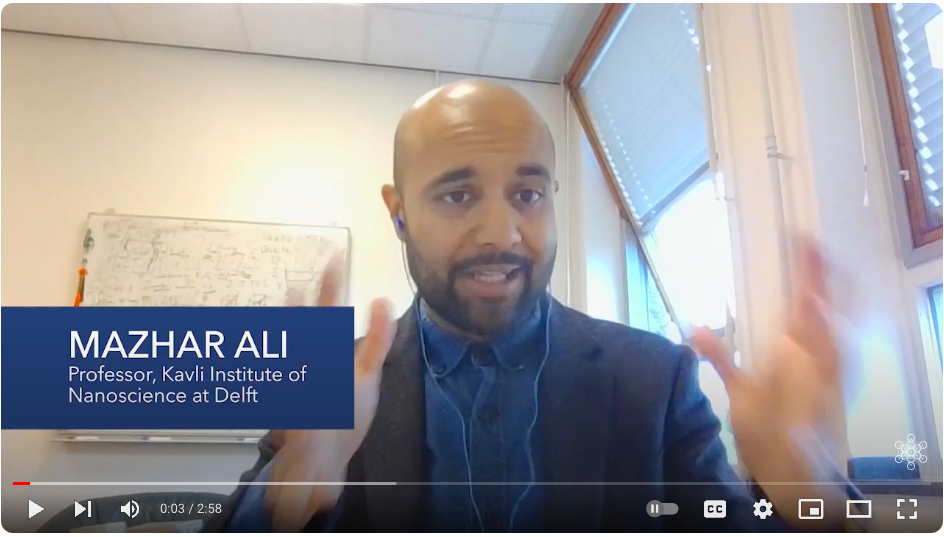The Quest to Transfer Quantum Information
by The Kavli Foundation
Physicists and biophysicists search for missing link between quantum computing, sensing and communication

The Author

The science and technology enterprise has long been captivated by the potential of quantum information. One of the most vexing issues hindering acceleration in the field is identifying a transduction system to send and receive quantum information across a broad range of frequencies. With such a system there would be a standardized way of connecting quantum devices and sharing information between them much like the worldwide telecommunication network that exists today – seamlessly connecting and sharing information through the internet, Bluetooth, phones, etc.
Intrigued by the potential, and a team of scientists with an elegant approach, The Kavli Foundation awarded Delft University of Technology, QuTech, and the Kavli Institute of Nanoscience, a $5M award to demonstrate quantum transduction from the high terahertz regime to other target frequency regimes.

“We understand this is an incredibly difficult endeavor,” shared Jeff Miller, science program officer of The Kavli Foundation. “Yet it takes someone willing to share in the risks, giving early seed funding to move science forward. This project is shining a spotlight into some promising but unexplored corners; whatever the outcome, something new will be learned.”
With the upcoming revolution of quantum computers, certain types of problems that would take traditional computers years to solve could be solved in mere seconds. Classical computers process bits, which are tiny pieces of information that make up data, denoted as either a 0 or 1. Everything that is shared online consists of bits – from text messages to pictures to videos. Qubits, the quantum analogue of bits, undergo quantum interactions with each other in quantum computers, creating entangled states that allow for more complex and faster processing of information. However, sharing the information stored in quantum computers and devices is still very difficult.
Principal investigator Mazhar Ali commented on the current state of computing information and the issues with frequencies. “Currently, computers generate information at a frequency of a few gigahertz, while telecom signals vibrate a thousand times faster (hundreds of terahertz). Qubits operate at more specific frequencies of five to ten gigahertz. But unlike connecting today’s computer data to a satellite, there is the additional challenge of preserving quantum mechanical information while sharing the signal. What we’d love to do is use the same forms of communication that we have while preserving quantum particle information for a broad range of frequencies.”
Learn more about the work at Delft and watch Ali discuss the challenges in this exciting and complex field.